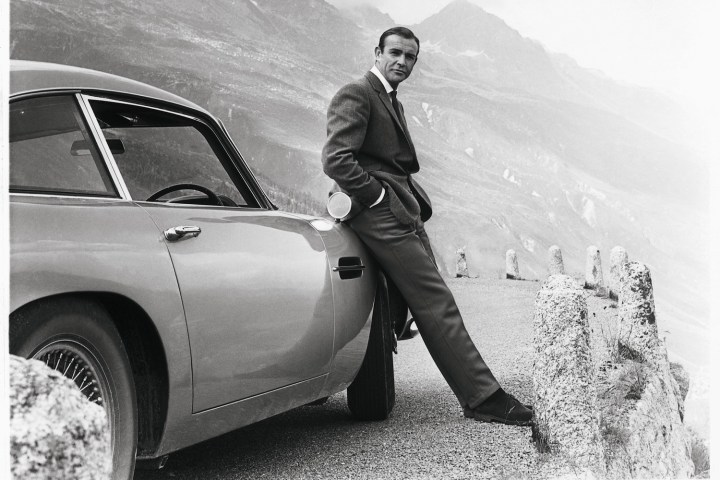
James Bond’s Aston Martin DB5 is one of the all-time great movie cars, and it’s about to make a comeback. Aston is working with Eon Productions, the company that produces the Bond films, to build 25 new DB5s identical to the car that appeared in 1964’s Goldfinger. As with the recent DB4 GT project, Aston prefers the term “continuation cars,” not replicas.
Each new DB5 will be an exact copy of the original movie cars (one of which just reportedly resurfaced after years in hiding), right down to gadgets like the trademark revolving license plate. Unlike a genuine 1960s DB5, however, the new cars won’t be road legal. Aston can’t certify newly built cars designed for ’60s safety standards.
Check out the fun movie gadgets in action:
The DB5 was introduced in 1963 as an evolution of the DB4 and made its star turn in Goldfinger the following year. Even though it ended its on-screen time with a crash, the DB5 forged a connection between Bond and Aston in the public consciousness. The car has appeared in six other 007 films since then: Thunderball (1965), GoldenEye (1995), Tomorrow Never Dies (1997), Casino Royale (2006), Skyfall (2012), and Spectre (2015). Numerous other Astons have appeared in Bond films, and the automaker even built a car, the DB10, specifically for Spectre.
Like the originals, the DB5 continuation cars will use a 4.0-liter inline-six, producing 282 horsepower and 280 pound-feet of torque. Aston quotes a 0 to 60 mph time of 7.1 seconds and a top speed of 148 mph. In a testament to how far performance cars have come in 50 years, those figures are fairly unimpressive today. A modern DB11 will do zero to 60 mph in 4.0 seconds and reach a top speed of 187 mph, and that’s with the smaller 4.0-liter twin-turbocharged V8. Aston offers a 5.2-liter twin-turbo V12 version that’s even faster.
Aston will build just 25 007-spec DB5s, priced at 2.75 million pounds (about $3 million at current exchange rates) each. Deliveries are expected to begin in 2020.
Building new versions of old cars and selling them for millions of dollars is becoming a trend among automakers. Aston previously gave the DB4 GT, a racing model that preceded the DB5, the same treatment. Jaguar started with the Lightweight E-Type and went on to resurrect the XKSS and D-Type. Even at seven figures, the prices of continuation cars are likely lower than what originals will fetch at auction.
Editors' Recommendations
- Aston Martin combines cameras and mirrors to give drivers maximum visibility
- If you want Aston Martin’s newest supercar, you’ll have to buy a classic first


